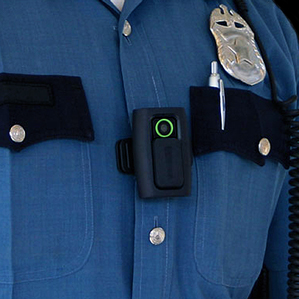Researchers Will Study Police Confrontations Via Body Cameras
As more police are equipped with cameras on their bodies to capture footage of interactions with the public, a group of researchers at the University of California, Los Angeles, has been given permission to study video and audio streams from one police department to learn how best to prevent confrontations from escalating.

Police body-cams have been proposed as ways to resolve allegations of needless use of force following the police shooting of an unarmed teenager in Ferguson, Missouri, and the death of a New York City man during his arrest for selling cigarettes illegally.
The White House last week pledged $75 million that police departments could use to buy 50,000 body cameras as a way to help “build and sustain trust” among civilians. But whether or not cameras will resolve disputes or improve trust, they could at least provide a wider window into how policing works.
The UCLA researchers will collect footage from between 50 and 100 officers next year. The police agency involved has not been disclosed, but police have started using such cameras in many cities, including Los Angeles.
One goal, says Jeff Brantingham, an anthropologist at UCLA who is leading the work, is to see whether software might help detect when encounters with members of the public escalate but are then calmed by a police officer.
“While we focus attention on things that escalated all the way to extreme outcomes, we know a lot less about other events,” Brantingham says. “Things that went down a dangerous path and ended up being okay. Why did it end up that way? That would provide a huge benefit in terms of training.”
Brantingham, who previously cofounded PredPol (see “Data-Toting Cops”), a startup that predicts where crimes are likely to occur, is collaborating on the body-cam project with Andrea Bertozzi, a mathematician at UCLA.
Starting in January, the researchers will try using software to help categorize police work into tasks such as talking with citizens, walking, driving, and going into buildings.
Automating the analysis of body-worn video footage will be challenging, says Song-Chun Zhu, an expert on computer vision at UCLA who is not involved in the project. While a stationary camera can detect changes in its field of view, the field of view of a camera worn on the body is constantly changing, making it harder to automatically identify objects or scenes. Nighttime lighting can make matters more difficult, and such video does not show the actual police officer, though his or her hands are visible in some cases.
Another factor is that officers can shut off the video at their discretion, although this in itself can be revealing. “That actually is useful information to get an idea of what is driving that decision,” Brantingham says.
Past studies have found that the presence of cameras is associated with moderation of behavior. A study done in Rialto, California, for example, found camera use correlated with fewer complaints against police.
Keep Reading
Most Popular
Large language models can do jaw-dropping things. But nobody knows exactly why.
And that's a problem. Figuring it out is one of the biggest scientific puzzles of our time and a crucial step towards controlling more powerful future models.
The problem with plug-in hybrids? Their drivers.
Plug-in hybrids are often sold as a transition to EVs, but new data from Europe shows we’re still underestimating the emissions they produce.
Google DeepMind’s new generative model makes Super Mario–like games from scratch
Genie learns how to control games by watching hours and hours of video. It could help train next-gen robots too.
How scientists traced a mysterious covid case back to six toilets
When wastewater surveillance turns into a hunt for a single infected individual, the ethics get tricky.
Stay connected
Get the latest updates from
MIT Technology Review
Discover special offers, top stories, upcoming events, and more.